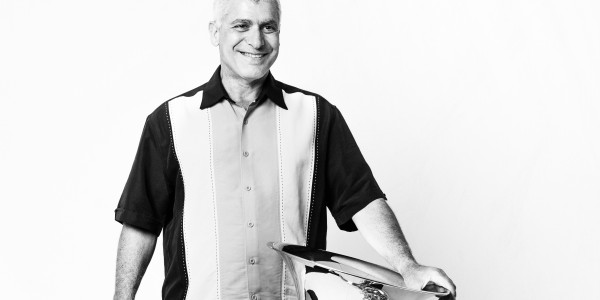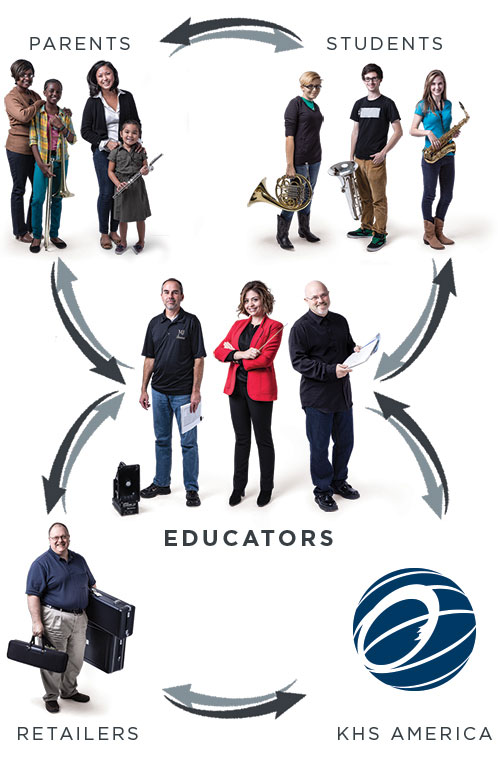I remember walking into the band room when I was 11 years old and meeting my great middle school band director, Mr. Charles Foster. His talk that day changed the course of my life. I am able to recall it now because of reconnecting with this great teacher before he passed away recently.
In the course of explaining the great things that happen when you take band as a class, Mr. Foster took several side trips into the different instrument families and why people choose them.
He got me with this approach to Why Low Brass:
“We can only be as good as our foundation. We need smart people who want to become fine musicians. These people will learn to play low brass instruments. We will only be as good as they can learn to play well. That’s why we test them at the same expectation as All the other instruments, Even Though it might be more difficult to achieve those expected goals.
If you are ready for a such rewarding challenge, see me after class.” I signed up that day.
At the first band class, Mr. Foster talked to the low brass beginners separately while the student teacher started the high brass session. ” Thank You for listening to my message and choosing low brass ! This is for team players. Even if you become a star, your happiest moments will come when you make others sound great. If you heard me and chose well, we will have a Great Band. You will ALSO play in a section that enjoys being together as musicians and friends. Many other band members will be your friends as well because of the support you provide them.” ( That “friends” approach has held true all these years!)
Then, after the greeting, Mr. Foster kept talking even though we could hear the high brass buzzing in the next room. What he talked about next I have heard since then, but in high school and college band rooms. Mr. Foster gave us a purpose and a compass on day one !
“We will build the sound of the band on you. We can only sound as big as you sound. We can only play as quiet as you can. But when you CAN , we will be great.” He told us that he expected us to speak woodwind fast on low brass. “We have to articulate like them to sound Unanimous….it means 100% together…like one. These are already great challenges….but there is more.
The whole band will tune to you. You will learn to tune with this machine”….and he got out a HealthKit tone generator with a good radio speaker and two dials ! The right dial on his home made tuning machine would rachet pitches while the left switch was fluid and could be moved until the student was satisfied that there were no “beats” between the pitches. Then Mr. Foster would move the dial to show us “Pro”
Level tuning. He then showed us buzzing on the mouthpiece like it was a game…. Call and response which turned into matching the machine…. We were unwittingly drone tuning on day one! We had to stop frequently because of the brand new lip sensations… During that rest time we would listen to great military band recordings to learn Foundation Function. That was Mr. Foster’s name for the job of the bottom of the band. Besides sound and intonation, he explained with recorded examples how “the low brass could be key influencers of the dynamic shaping of any piece of music….and dynamics are the number one story telling tool of musicians! You have to deliver a wide range of dynamics to get the audience involved in our music. We can only be as big or as small as the big instruments can be.
So those are the challenges. See you next time!”
We were all hooked.
Next time I will discuss successful low brass pedagogy for beginners…..
Training Young Low Brass Players ( once they are “hooked”:))
Click Here for Additional Information in a Downloadable Handout
About the Author
SAM PILAFIAN is tubist and arranger for Boston Brass, Educational Ambassadors for Jupiter Band Instruments Corporation. He also holds Jupiter appointments as Artist, Clinician and Chief Design Consultant. He is a Professor in Practice at the Frost School of Music, University of Miami and was a founding member of the internationally renowned Empire Brass Quintet (1971-1993).He has also recorded and performed with the Boston Symphony Orchestra, the New York Philharmonic Orchestra, the Orchestra of St. Luke’s, the Metropolitan Opera Orchestra, the Duke Ellington Orchestra, Lionel Hampton, and Pink Floyd. As a solo jazz artist, Sam has recorded fifteen CDs. His long career has earned him an Emmy® for Excellence in Instructional Video Production, the Walt Disney Award for Imagination and Innovation in Design, World Championships as a teacher in both the open and world class of Drum Corps International, the Walter Naumberg Chamber Music Award, the Harvard Music Association Prize, the University of Miami’s Distinguished Alumni Award, the Brevard Music Center Distinguished Alumni Award, the Robert Trotter Visiting Professorship at the University of Oregon and the annual Outstanding Teacher Award from the Arizona State University. As an arranger, composer and recording producer, Sam has recently produced and written for Joseph Alessi (New York Philharmonic), the Boston Brass, the Brass Band of Battle Creek, the Academy (of Drum Corp International), and the United States Air Force Band. Sam is the coauthor with Patrick Sheridan of the best-selling pedagogy texts and DVD’s “Breathing Gym” and “Brass Gym”. Professor Pilafian previously served for over forty years on the faculties of Boston University, the Tanglewood Institute, Berklee College of Music and Arizona State University.
The content of this Blog article or Banded Story is the intellectual property of the author(s) and cannot be duplicated without the permission of KHS America and/or the author(s). Standard copyright rules apply.



 We look forward to the evolution of this exciting program, and welcome feedback on how we can further enhance the work that you do in music education.
We are excited to offer your program the opportunity to join the KHS America Academic Alliance today.
We look forward to the evolution of this exciting program, and welcome feedback on how we can further enhance the work that you do in music education.
We are excited to offer your program the opportunity to join the KHS America Academic Alliance today.